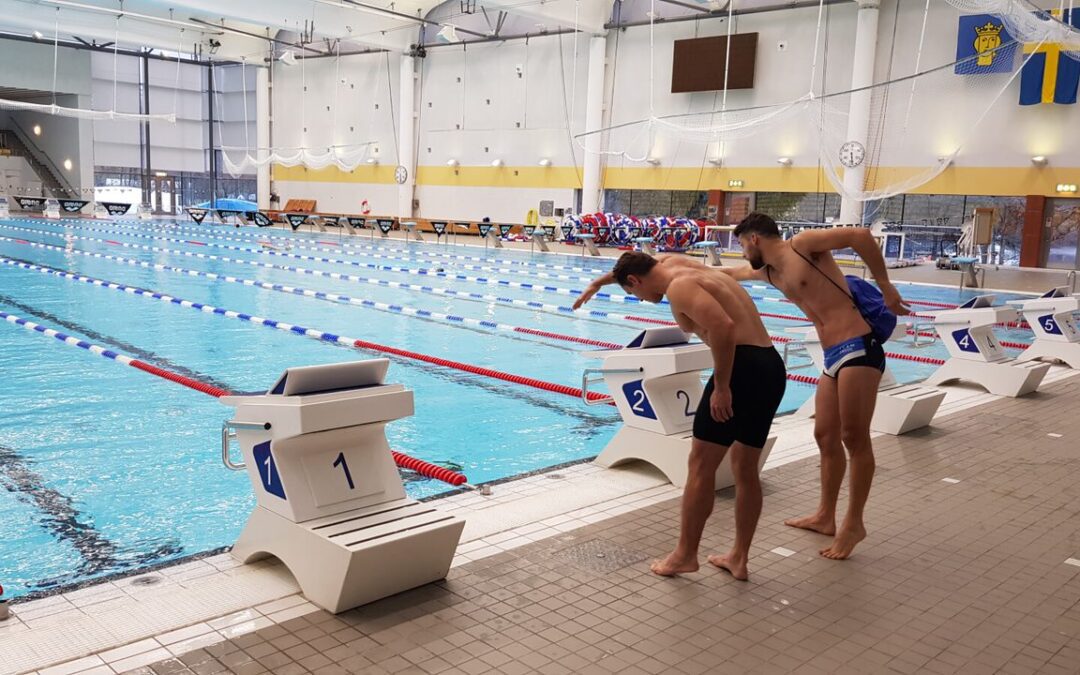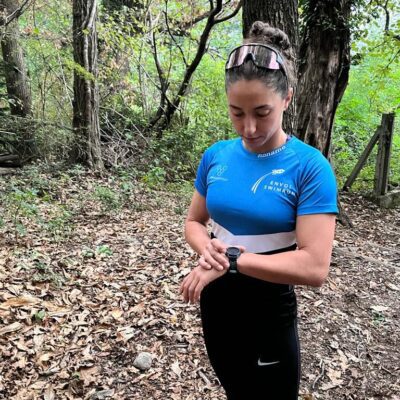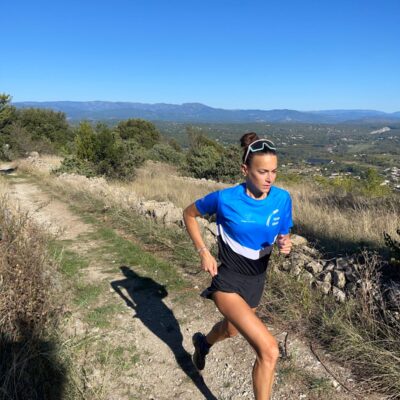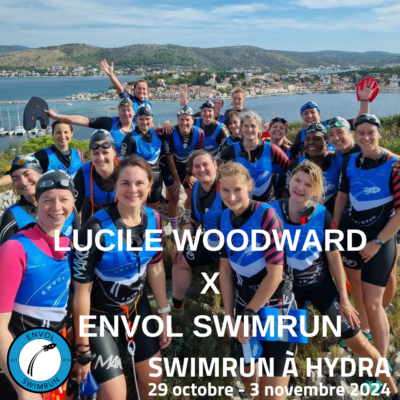Written by coach Tom Jenkinson
Sweet spot training. Is it actually beneficial, and if so what is it beneficial for? Does it fit in with polarized training?
Sweet Spot is an intensity that is in the second zone in the three-zone model used in most clinical studies see diagram below. This is between LT1 (2 mmol) and LT2 (4 mmol) and is inarguably beneficial; this type of “controlled threshold” work features in the plans of all successful aerobic athletes.
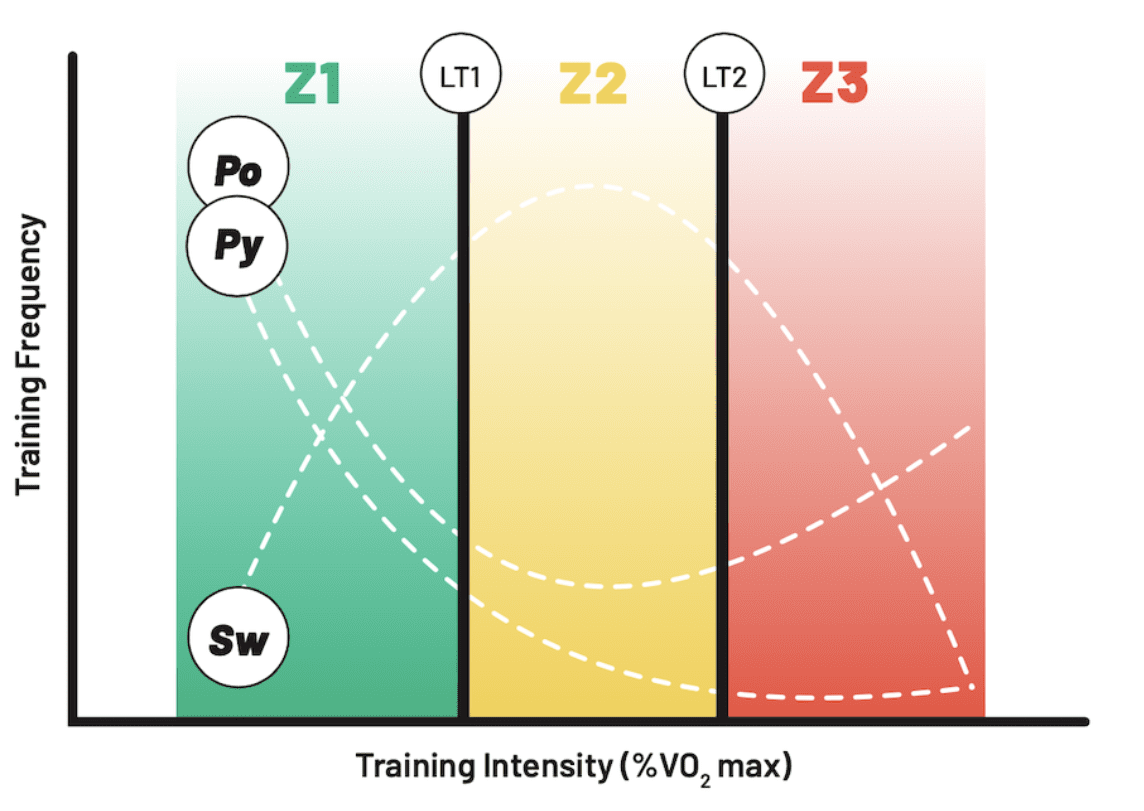
For swimming it is 95 to 98% of Critical Swim Speed (CSS) and for run intervals at around half-marathon-race-pace or slightly faster (often referred to as Tempo Intervals) but it depends on the interval duration and how it is stacked against other workouts, so in practice these can be anywhere between marathon race pace and tempo pace.
I think where the confusion occurs is when it is applied as “an approach” such as in the diagram above. Here the majority of work is done in this zone. The other two lines in the diagram are Po = Polarized and Py = Pyramidal.
Threshold or sweet spot?
So as an approach, no it doesn’t fit with Polarized, but as an intensity polarized plans certainly use sweet spot intensity. Note that lab researchers use 2 mmol to 4 mmol to define “threshold” training (they need to have some boundaries) it doesn’t mean that the best threshold training intensity is the high end arbitrary “lab” 4 mmol LT2. We know that the Norwegian system focuses on the 2.3 to 3.0 zone and that there are even individually tailored targets. This is still both “threshold” and sweet spot, but definitely not at the high end.
I don’t think we need to go into the benefits of controlled threshold workouts as this is well documented, but as an overall approach, I think a Sw (Sweet Spot) focused approach could be beneficial for very time-crunched individuals who want to target the broadest benefits in the least time. This of course has its limitations, but if the goal is general fitness and not performing at the highest levels at longer endurance events then I don’t see why not.
The other two lines in the graph are interesting. Polarized assumes a greater “polarization” between Z1 and Z3, whereas Pyramidal assumes a stepping down of volume, most Z1, some Z2, and a little Z3. Note I think the Po and Py lines are a little confusing as the area below the lines should be the same if the volume is the same, and I don’t see why we’d make a general assumption that Po is so much higher volume than a Py distribution.
Pyramidal or Polarized?
I would say my own training is Pyramidal (rather than Polarized). I place a priority on 1) easy weekly volume 2) threshold (sweet spot) sessions and 3) short intervals. Interestingly I listened to Greta Koens (a Dutch elite coach) with her 10k athletes. She does not have VO2-specific intervals. Her focus is easy volume plus threshold sessions and then a very short session of anaerobic sprints.
In practice, most people who think they are polarized are in fact pyramidal. I very much believe in looking at the demands of a race and reverse engineering the training principles. Smart athletes and coaches do this and don’t spend their time on Twitter banging the drum for one very strict approach or another. Specificity is also important, for example, elite half marathon run plans have a larger focus on threshold work, especially during the race preparation phase to match the demands of the race.
Comparing Sw with Po/Py as an approach isn’t an apples-to-apples comparison. When weekly volume gets high, Po/Py isn’t a choice, it is a necessity! For Team Envol athletes on the Pro Plan the volume increases with easy distance runs and technique endurance focused swim sessions to ensure this polarization. Whereas those on the lower volume Short Plan will have less polarization and a higher overall percentage of Sweet Spot intensity.
How long do endurance sessions need to be? Can they be replaced by shorter sweet spot sessions?
In terms of general aerobic fitness gains, the clinical evidence is that they can, the caveat is that if you are training for longer events (let’s say over 3 hours) you need the specificity of those long endurance sessions. Pool time is a limiting factor but if you have the opportunity to increase a 60-minute session to 90 minutes for a couple of weekly swims please do, and during the open water season these should be prioritized. For running, the first 60 minutes is almost always beneficial, then after 60-90 minutes the benefits curve flattens off, and after 2 hours you probably aren’t getting a good cost-benefit ratio (but this also depends on the individual). Most people go too hard in these types of sessions to actually achieve the stimulus that they are intended for. I personally look to increase the total weekly volume by running more easy sessions rather than prioritizing a single over-distance session.
Train Hard and Have Fun. /Tom.

Have fun and train hard!
Did you know that Envol also provides single discipline plans for distance running and open water swimming? For more information contact info@envolcoaching.net

